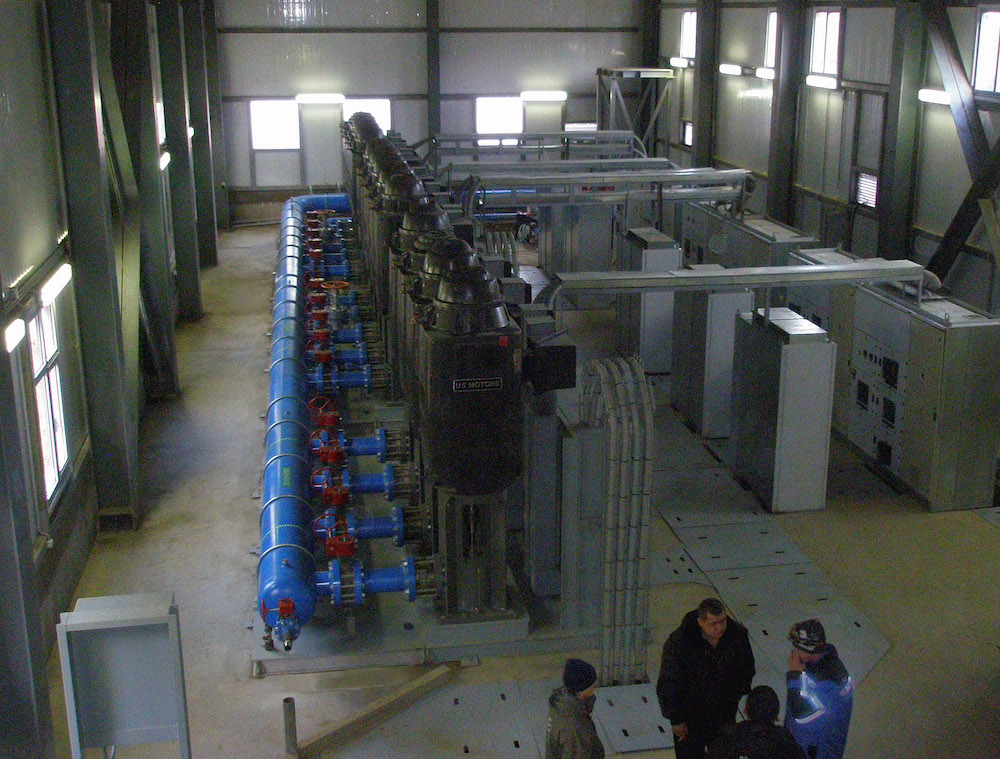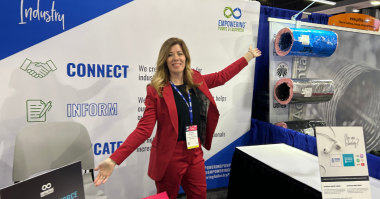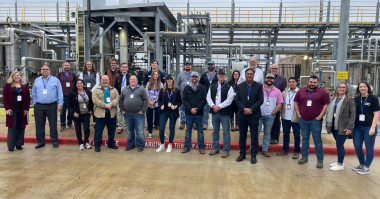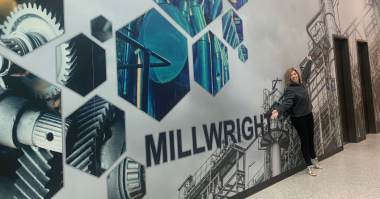I was really thrilled with the opportunity to interview Mark Meadows Co-Owner of the global pump industry company Torrent Engineering & Equipment who has been hard at work managing the development and provisioning of the high pressure pump stations for the 2014 Winter Olympics in Sochi, Russia since 2008.
Mark and his partner Joe Cousins have been providing their engineering expertise for industrial systems of many kinds including the pump and valve industry for more than 25 years. In the year 2000 they formed a partnership to establish Torrent Engineering & Equipment.
The 2014 Winter Olympics in Sochi, Russia is actually the third Olympic event in which they’ve provided their expertise in the niche market of snow making with high-power, large capacity systems; the first being the 2002 Winter Olympics in Salt Lake City, Utah; the second the 2010 Vancouver, Canada Winter Olympics, and now their pump stations are supporting the alpine and freestyle events currently going on throughout the month of March, 2014 (including the Paralympics Winter Games.)
Mark himself was heavily involved in the front-end work for the 2014 Sochi Winter Olympics starting in 2008 when he enjoyed the early opportunity to scope out the future site of the Olympic games in Russia and aid in the beginning of the discovery, design, and engineering phase for the pumping stations that would operate along the mountain that was at that time just newly developed specifically in preparation for hosting the Olympic events in the Rosa Khutor resort area. The pump system engineering design phase spanned the course of approximately two years (2008 – 2010) when the construction and transport process began.
Meeting the Pumping System Development and Installment Challenges for the Olympic Games
There were a number of challenges the Torrent team faced as they worked to deliver the optimum pumping stations to meet the unique requirements of the Russian climate, environment, and altitude. While concerns connected with derating of the electrical equipment involved in the overall snow-making/pumping systems for the altitudes involved with the Sochi Winter Olympic events were nowhere nearly as high as those the Torrent engineers have faced when working at premier ski resorts in the U.S. where the distance above sea level is at times as much as 10,000 feet and more; they still had to find a way to get a sufficient amount of water up a significantly high vertical rise of approximately ¾ mile (about 1000 meters) and do so in a way that would supply the adequate amount of water to be crystalized into snow at the correct pressure ratings.
Working together with Torrent in this venture was Midland, Michigan Company SMI (Snow Machines, Inc.) who partnered with Torrent and provided the snow guns that actually spray the snow out. Between SMI and Torrent they have had workers on-site in Sochi, Russia for the past 4-5 years working on the discovery and construction process initially, and then once the equipment was all set in place, working to monitor the equipment as it’s been used as a sort of testing process these past couple of years for various local Russian events leading up to the Winter Olympics.
Another challenging aspect involved in the snow making station installations was the actual process of shipping these high-powered systems from Torrent’s U.S. factory to the project site in Russia. International sea shipping container limitations involved a maximum packaging size of 40 feet in length by eight feet in width. Due to these restrictions, the folks at Torrent had to carefully split each shipment into several containers. Over the course of approximately two years, they were able to complete the transport process having finally shipped approximately 25 fully-loaded containers overseas.
Mark described additional, detailed aspects of the challenges involved in meeting the pump system needs at the Olympic events: “…There are actually three different pump systems. There are two lakes that store the water and our primary pump station sits adjacent to one of those two lakes, so that’s the first location where we start pumping up the mountain in the snow making system. The primary pumping system adjacent to the storage lakes has (14) 600HP vertical pumps in it. This is high pressure and big volume – it’s a big installation. So then we have to limit the pressure to a reasonable point. It’s still very high in terms of what people are used to, but there are certain working pressures and categories of piping and equipment that match these needs.
We pump out of this primary pump house and its 1000 PSI leaving the building. Then we pump it up to a booster pump house, which is the first booster; probably about halfway up the mountain in terms of vertical rise, and then the pressure starts to get to a point where we need to increase it again for the working pressure that we’re using in the system. So at this point we boost the pressure as it goes out of this booster pump house building.
The first booster pump house has (5) 300HP pumps in it. Then we send it up the hill even further and as it goes up there’s less and less total demand, so the capacity gets smaller. Then there’s a booster pump house about two-thirds of the way up the mountain and that booster pump house, which we call booster pump house #2, has 2 pumps in it that are 300HP. Those pumps will pump to the top of the system, which for us was the top of the men’s downhill, which is actually the highest point of the snow making system.
That is the 1000 meters of vertical rise. So that was part of the challenge, just dealing with the size of the system and then we wanted big flow capacity to have a system that could really handle the job in short windows of time – so we had big volume and we had high pressure for the elevation. When you combine those two together, you then need big HP and big vertical pumps.”
More Exciting Pump System and Industrial Projects
With Torrent’s exciting history of supplying pumping system stations to several Winter Olympic events, I was curious as to what other industrial projects Mark and his team are currently looking forward to. He told me that in addition to snow making pump systems, they are also heavily involved in the oil and gas industry, as well as in the field of irrigation. Currently the Torrent Engineering & Equipment team is working on a few exciting projects in China, Aspen, Colorado, and they are also working on a separate irrigation project in Russia that is totally unrelated to the 2014 Sochi Winter Olympics; but that involves the design and installation of a lot of new pump stations customized to suit the needs of that specific project.
As an irony, when I was asking Mark about his latest project work, of his own accord, he brought up a subject that we at EmpoweringPumps.com have been speaking a lot about lately; energy efficiency with pump systems. Mark made a point while were speaking to mention how important that topic of energy efficiency with pumps is in their engineering design and development work.
Mark stated: “We feel as far as efficiency goes, we use the multi-stage vertical turbine pumps, which are about as efficient as you can get for the water pumps that will do the job that we need to do and the motors are all high efficiency, high electric motors. That combination is about as efficient as we can be to actually pump this water. We use variable speed drives for controlling and for balancing the system which saves energy there too, so that’s the big part of the efficiency side of it – you know the equipment we select and then how we operate it.”
I found all of the information Mark shared with me to be incredibly interesting and educational. What an exciting opportunity to be a part of such historical moments where people from all nations around the globe convene together to demonstrate their unique talents and sportsmanship!
It made me think again about how lucky I feel to be a part of the amazing pump industry community, which has such a far reach across the globe!
As I consider the many details Mark shared with me about their project and experiences in supporting the 2014 Sochi Winter Olympics, the amazing amount of meticulous planning, organization, and effort involved in this entire project was in no way lost on me. I would just like to thank Mark for sharing his experiences with the Empowering Pumps community and wish him, his Co-Owner Joe Cousins, and their team many more successful years to come in all of their pump system work and varied industrial projects!








Efficiency of pumps, particularly those pumping clear water, can be further improved and retained by application of a low surface energy coating with low Ra finish. This can reduce pipe friction losses and extend resistance to corrosion as well. The upcoming DOE guidelines on pump efficiency should drive engineering advances in this field as well.
[…] an educational focus, this is a good opportunity for me to share some of what I’ve learned about pumps used for the construction […]
[…] February 2014, I was thrilled to have the opportunity to interview the co-owner of Torrent Engineering to discuss the pump stations his company installed in Russia for the 2014 Winter Olympics. This […]